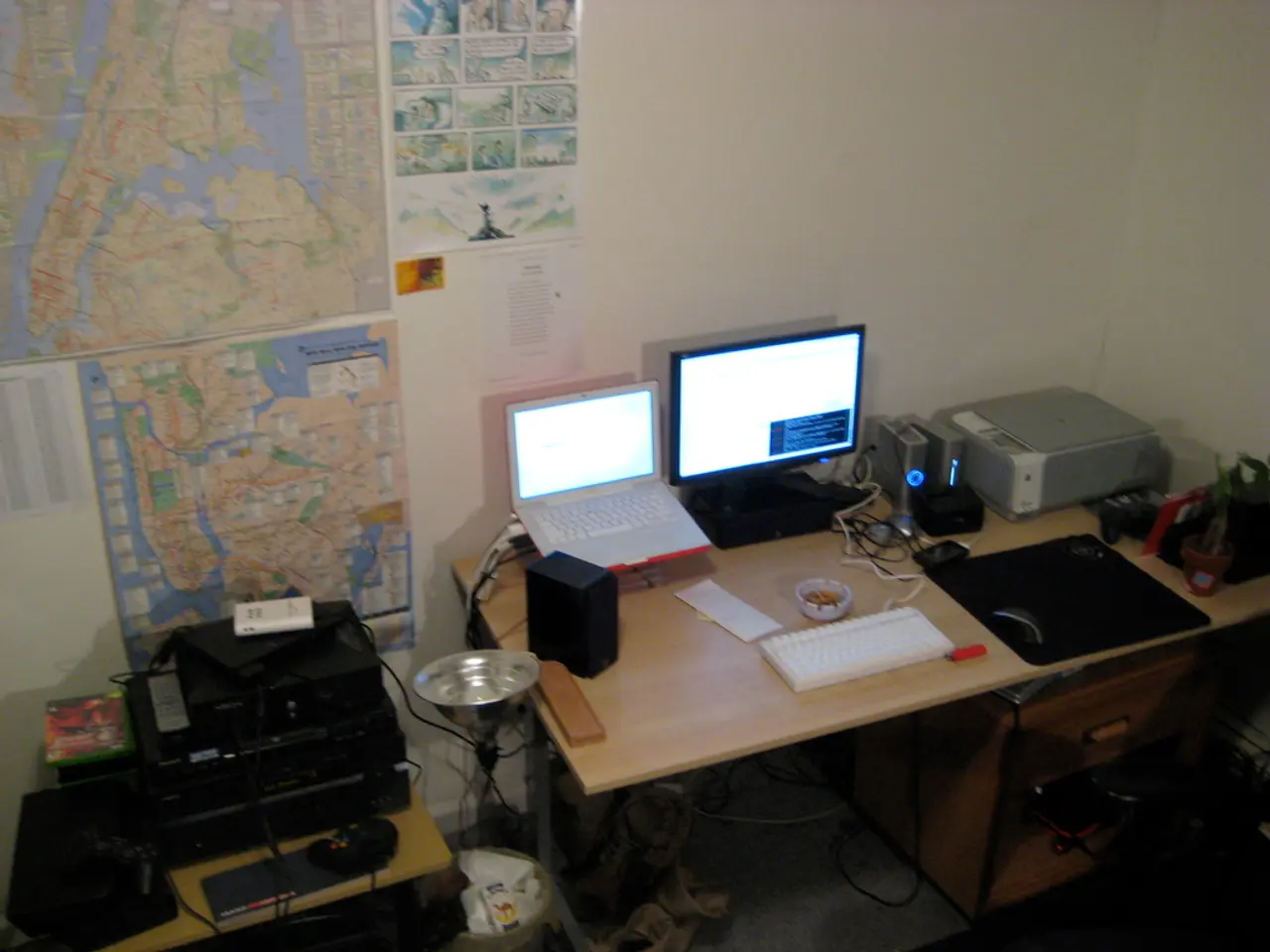Rising energy consumption by AI systems leads to escalating power expenses for households nationwide in the US, with certain states experiencing increasing energy costs of as much as 36%
In the United States, the increasing energy consumption from AI-related data center operations is causing a significant strain on the electricity grid. This surge in demand is outpacing the rate of new electricity supply additions, leading to a national energy emergency.
According to Newsweek, energy prices increased by 6.5% between May 2024 and May 2025, mainly due to increased consumption from data centers. U.S. data centers accounted for about 45% of global data center electricity use in 2024, consuming roughly 4.4% of the total U.S. electricity generated, approximately 176 terawatt-hours. This figure is projected to grow to between 6.7% and 12% by 2028, driven largely by AI workloads, equivalent to up to 580 billion kilowatt-hours annually.
The AI industry's power usage is projected to represent 6.7% to 12.0% of total U.S. electricity consumption forecasted for 2028. The Lawrence Berkeley National Laboratory's 2024 United States Data Center Energy Usage Report shows a compound annual growth rate of electricity use in data centers from 2014 to 2028, increasing from a 7% growth rate from 2014 to 2018, to 18% between 2018 and 2023, and then ranging from 13% to 27% between 2023 and 2028.
Reuters reports that the rapid expansion of data centers for AI and crypto mining is forcing grid operators to plan for new contingencies. The constant retrieval of information and its incorporation into AI's dataset requires a significant amount of energy. AI tools available today rely upon the constant ingestion of information, leading companies to fetch as much content as possible.
This surge in energy consumption is causing several challenges. Grid operators have narrowly avoided wide-scale blackouts caused by data centers activating their own power generators. Failing to respond quickly enough to an oversupply of electricity could lead to cascading power outages across the affected region.
The increasing energy consumption also puts pressure on electricity prices. Higher demand without matched supply increases the risk of electricity price hikes, particularly affecting households and regions with limited power availability. AI and data center operators can often manage higher costs, but other consumers may bear the burden.
In addition to electricity price pressure, the energy consumption of AI data centers also impacts energy and water resource use. AI data centers require immense power primarily for IT equipment operations and cooling, which also demands substantial water resources. This compounds environmental and infrastructure stress.
To address these challenges, billions in investment are flowing into building data centers and grid infrastructure. However, practical challenges remain in scaling power sources, transmission, and cooling technologies fast enough. The government has recognized the urgent need to strengthen and update the grid to maintain reliability and keep energy costs stable as AI data centers and other electrification sectors rapidly increase electricity demand.
The expanding data center industry also has other impacts. Living near power-hungry data centers reduces the life span of electrical appliances, causing malfunctions, overheating, and electrical fires. One scholar dubbed AI crawlers a "digital menace" due to their consequences.
In summary, the rising energy demands of AI-driven data centers are rapidly increasing U.S. electricity demand, straining grid infrastructure, contributing to potential electricity price increases, and necessitating urgent grid modernization and coordinated policy actions to ensure long-term reliability and affordability.
Sources: [1] Newsweek [2] Reuters [3] Lawrence Berkeley National Laboratory's 2024 United States Data Center Energy Usage Report [4] The New York Times [5] The Washington Post
Read also:
- Rapid Growth in Bio-based Polypropylene Sector Anticipated at a Compound Annual Growth Rate of 26.5% by 2034
- Urban Africa Expands AI-Driven Battery-Swapping Operations with $8.1M Finance from Kofa
- Jellyfish incapacitate France's largest nuclear facility, causing disruption.
- SpaceX Increases Reward for Discovering Starlink Security Vulnerabilities to a Maximum of $100,000 for Hackers








